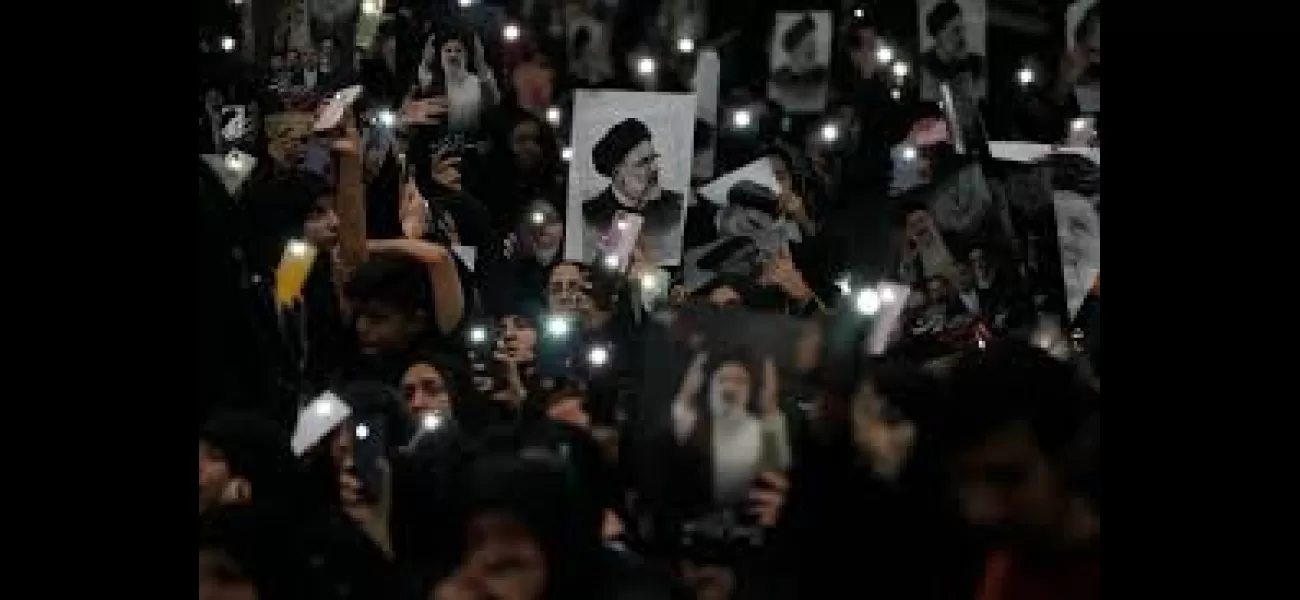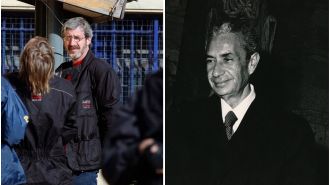Iran gets ready for funeral for president, foreign minister, and victims of helicopter crash.
Iran prepares to bury their late president at a holy site, marking their respect for the leader killed in a helicopter crash, ending days of processions.
May 23rd 2024.

The city of Dubai was abuzz with preparations on Thursday as Iran made arrangements to lay their late president to rest at the holiest site for Shiite Muslims in the Islamic Republic. This was a final tribute to a protege of Iran's supreme leader who tragically lost his life in a helicopter crash earlier this week.
The burial of President Ebrahim Raisi at the Imam Reza Shrine in Mashhad marked the end of days of processions across Iran, aimed at honoring the country's theocracy in the wake of the devastating crash that also claimed the lives of the country's foreign minister and six others. However, these services did not see the same turnout as those held for Revolutionary Guard Gen. Qassem Soleimani in 2020, who was killed in a U.S. drone strike in Baghdad.
This could be seen as a reflection of the public's sentiments towards Raisi's presidency, which was marked by a harsh crackdown on all forms of dissent during the protests that erupted after the death of Mahsa Amini in 2022. Amini was detained for allegedly not complying with the mandatory headscarf rule imposed by authorities. The government's actions, as well as the struggling economy, have been noticeably absent from the extensive coverage provided by state television and newspapers. Raisi's involvement in the mass execution of thousands of dissidents at the end of the Iran-Iraq war has also been swept under the rug.
Authorities have warned against any public celebration of Raisi's death, and the city of Tehran has been heavily guarded since the crash. Thousands of mourners dressed in black gathered in the city of Birjand, Raisi's hometown in South Khorasan province, to bid a final farewell. As a semi truck carrying his casket made its way through the streets, people reached out to touch it, and some even threw scarves and other items for blessings. The truck bore a sign that read, "This is the shrine."
Later, Raisi's final resting place would be the Imam Reza Shrine, where the 8th imam of Shiite Islam is buried. The region has long been associated with pilgrimages for Shiite Muslims, and a hadith attributed to the Prophet Mohammad says that anyone who visits the shrine with sorrow or sin will be relieved of their burden. In 2016, Raisi was appointed by Supreme Leader Ayatollah Khamenei to run the Imam Reza charity foundation, which manages a vast conglomerate of businesses and endowments in Iran, as well as oversees the shrine. This foundation, like many others in Iran, operates without any public scrutiny and is answerable only to the supreme leader. The Imam Reza charity is believed to be one of the largest in the country, with an estimated worth of tens of billions of dollars.
Raisi's burial at the shrine is a significant honor for the cleric and marks the first time a top politician in Iran has been laid to rest there. His death, along with that of Foreign Minister Hossein Amirabdollahian and six others, comes at a sensitive time for Iran, both domestically and internationally. At 63 years old, Raisi was considered a potential successor to the 85-year-old Khamenei. Notably absent from state television coverage of the funeral prayers were any of Iran's living past presidents, except for Khamenei, who served from 1981 to 1989. The reason for their absence was not explained.
Iran is set to hold its presidential election on June 28, and currently, there is no clear favorite among the country's political elite, especially without a Shiite cleric like Raisi in the running. In the absence of a president, Acting President Mohammad Mokhber, who was relatively unknown until the crash on Sunday, has taken on the role and even attended a meeting between Khamenei and Hamas leader Ismail Haniyeh on Wednesday.
The burial of President Ebrahim Raisi at the Imam Reza Shrine in Mashhad marked the end of days of processions across Iran, aimed at honoring the country's theocracy in the wake of the devastating crash that also claimed the lives of the country's foreign minister and six others. However, these services did not see the same turnout as those held for Revolutionary Guard Gen. Qassem Soleimani in 2020, who was killed in a U.S. drone strike in Baghdad.
This could be seen as a reflection of the public's sentiments towards Raisi's presidency, which was marked by a harsh crackdown on all forms of dissent during the protests that erupted after the death of Mahsa Amini in 2022. Amini was detained for allegedly not complying with the mandatory headscarf rule imposed by authorities. The government's actions, as well as the struggling economy, have been noticeably absent from the extensive coverage provided by state television and newspapers. Raisi's involvement in the mass execution of thousands of dissidents at the end of the Iran-Iraq war has also been swept under the rug.
Authorities have warned against any public celebration of Raisi's death, and the city of Tehran has been heavily guarded since the crash. Thousands of mourners dressed in black gathered in the city of Birjand, Raisi's hometown in South Khorasan province, to bid a final farewell. As a semi truck carrying his casket made its way through the streets, people reached out to touch it, and some even threw scarves and other items for blessings. The truck bore a sign that read, "This is the shrine."
Later, Raisi's final resting place would be the Imam Reza Shrine, where the 8th imam of Shiite Islam is buried. The region has long been associated with pilgrimages for Shiite Muslims, and a hadith attributed to the Prophet Mohammad says that anyone who visits the shrine with sorrow or sin will be relieved of their burden. In 2016, Raisi was appointed by Supreme Leader Ayatollah Khamenei to run the Imam Reza charity foundation, which manages a vast conglomerate of businesses and endowments in Iran, as well as oversees the shrine. This foundation, like many others in Iran, operates without any public scrutiny and is answerable only to the supreme leader. The Imam Reza charity is believed to be one of the largest in the country, with an estimated worth of tens of billions of dollars.
Raisi's burial at the shrine is a significant honor for the cleric and marks the first time a top politician in Iran has been laid to rest there. His death, along with that of Foreign Minister Hossein Amirabdollahian and six others, comes at a sensitive time for Iran, both domestically and internationally. At 63 years old, Raisi was considered a potential successor to the 85-year-old Khamenei. Notably absent from state television coverage of the funeral prayers were any of Iran's living past presidents, except for Khamenei, who served from 1981 to 1989. The reason for their absence was not explained.
Iran is set to hold its presidential election on June 28, and currently, there is no clear favorite among the country's political elite, especially without a Shiite cleric like Raisi in the running. In the absence of a president, Acting President Mohammad Mokhber, who was relatively unknown until the crash on Sunday, has taken on the role and even attended a meeting between Khamenei and Hamas leader Ismail Haniyeh on Wednesday.
[This article has been trending online recently and has been generated with AI. Your feed is customized.]
[Generative AI is experimental.]
0
0
Submit Comment





